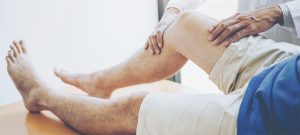By Heidi Smith, Contributor
 Abdul Ezeldin, M.D., FACC, FSCAI, FASE, FSVM, FASNC, RPVI, is a board-certified cardiologist specializing in interventional cardiology, as well as vein and artery procedures. He has extensive experience in helping patients resolve advanced problems with blood circulation in the legs, heart and carotid arteries. Dr. Ezeldin recently relocated to Venice from Arkansas, where he practiced for more than 20 years. He sees patients at ShorePoint Medical Group and is a member of the medical staff at ShorePoint Health Venice.
Abdul Ezeldin, M.D., FACC, FSCAI, FASE, FSVM, FASNC, RPVI, is a board-certified cardiologist specializing in interventional cardiology, as well as vein and artery procedures. He has extensive experience in helping patients resolve advanced problems with blood circulation in the legs, heart and carotid arteries. Dr. Ezeldin recently relocated to Venice from Arkansas, where he practiced for more than 20 years. He sees patients at ShorePoint Medical Group and is a member of the medical staff at ShorePoint Health Venice.
Q. Can you describe the typical patient you see who has serious blood circulation problems?
A. Patients typically come to me at the advice of their primary care physician or another specialist. They complain of chest pain, leg pain, and/or swelling of the legs. They are usually middle-aged to elderly and may be male or female.
Q. What causes the symptoms?
A. The circulatory system is a network, sort of like pipes, running throughout the body. If blood vessels become narrowed or blocked, the blood can’t flow normally, causing pain and swelling. Blood clots may form, placing the patient at risk for stroke, heart attack, leg amputation, or even death. Common contributing factors to narrowing or blockage of veins or arteries include the aging process, smoking, diabetes and obesity.
Q. How do you diagnose the extent and location of the problem?
A. We conduct a thorough physical exam. If the patient has pain and swelling in the legs, we use an ultrasound of the veins and arteries of the legs to identify narrowed or blocked vessels. Depending on the abnormalities we find, we usually start with conservative management. Medications can be helpful. We advise on behavioral changes such as stopping smoking and increasing exercise. These measures can improve circulation. A similar approach is common with cardiac symptoms, although the diagnostic tools differ. If a patient has circulatory problems in the legs, we typically look for issues in the blood vessels of the heart and the carotid arteries, as well.
Q. What if conservative measures fail?
A. For circulatory problems in the legs, if we don’t see improvement after a few weeks, we will consider opening the artery or vein using a balloon or stent. We use the least invasive technique possible. It is usually an outpatient procedure in the catheterization lab where we use dye and real-time X-ray to visualize the target. We then follow the patient with routine ultrasounds and can repeat the procedure in the future, if needed. Problems with cardiac or carotid artery circulation suggest a similar approach.
Q. What are next steps following the intervention?
A. In cooperation with the patient’s primary physician, we monitor the patient’s blood sugar and cholesterol levels. We emphasize not smoking and may help advise on medication. We ask the patient to monitor their blood pressure, increase their activity level, and adopt a healthy diet.
Q. What is your advice for patients who have symptoms of circulatory problems in their legs or heart?
A. See your doctor immediately. Many arterial or venous disorders are treatable if found early. If left untreated, options can become limited, and patients may be at higher risk for stroke, heart attack, leg amputation, and even death. Our goal is to help patients achieve a happy, pain-free lifestyle where they are able to pursue their normal activities.
Shore Point Health Venice
941.876.5833
ShorePointCardiology.com








